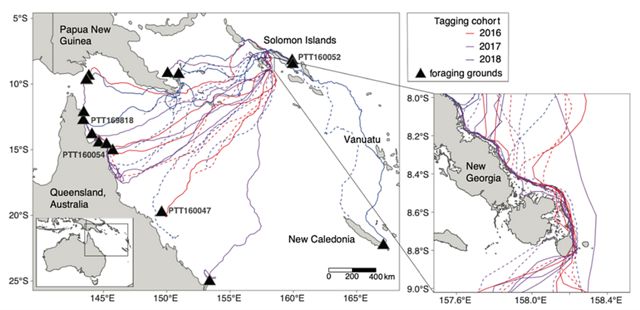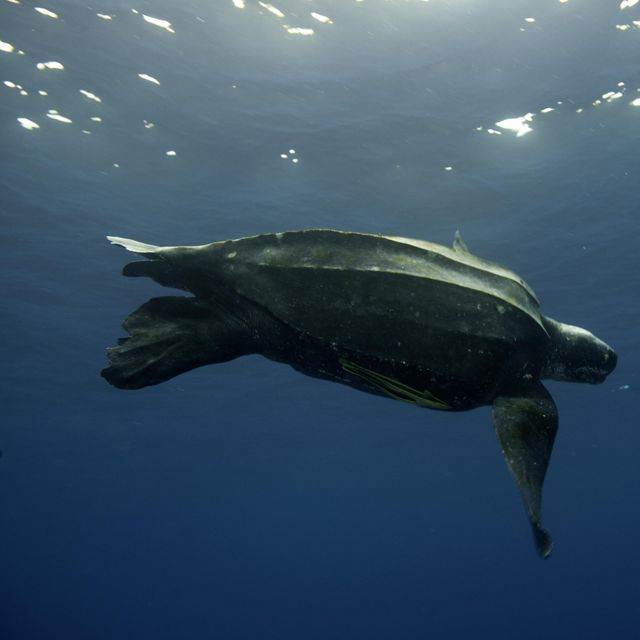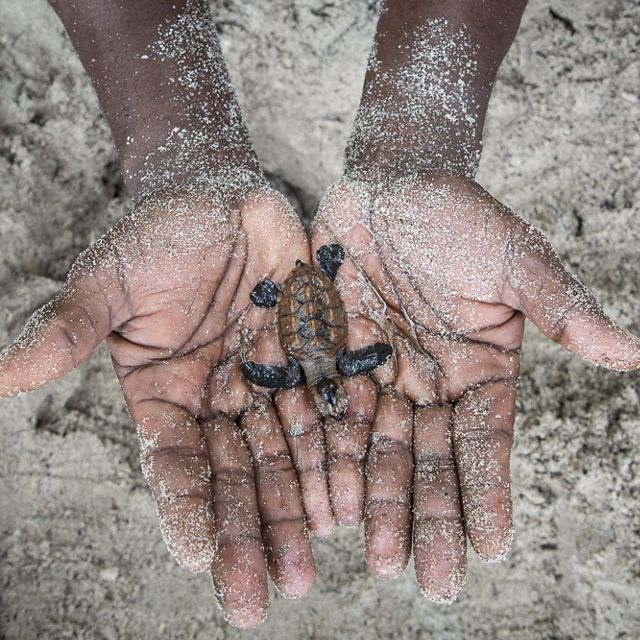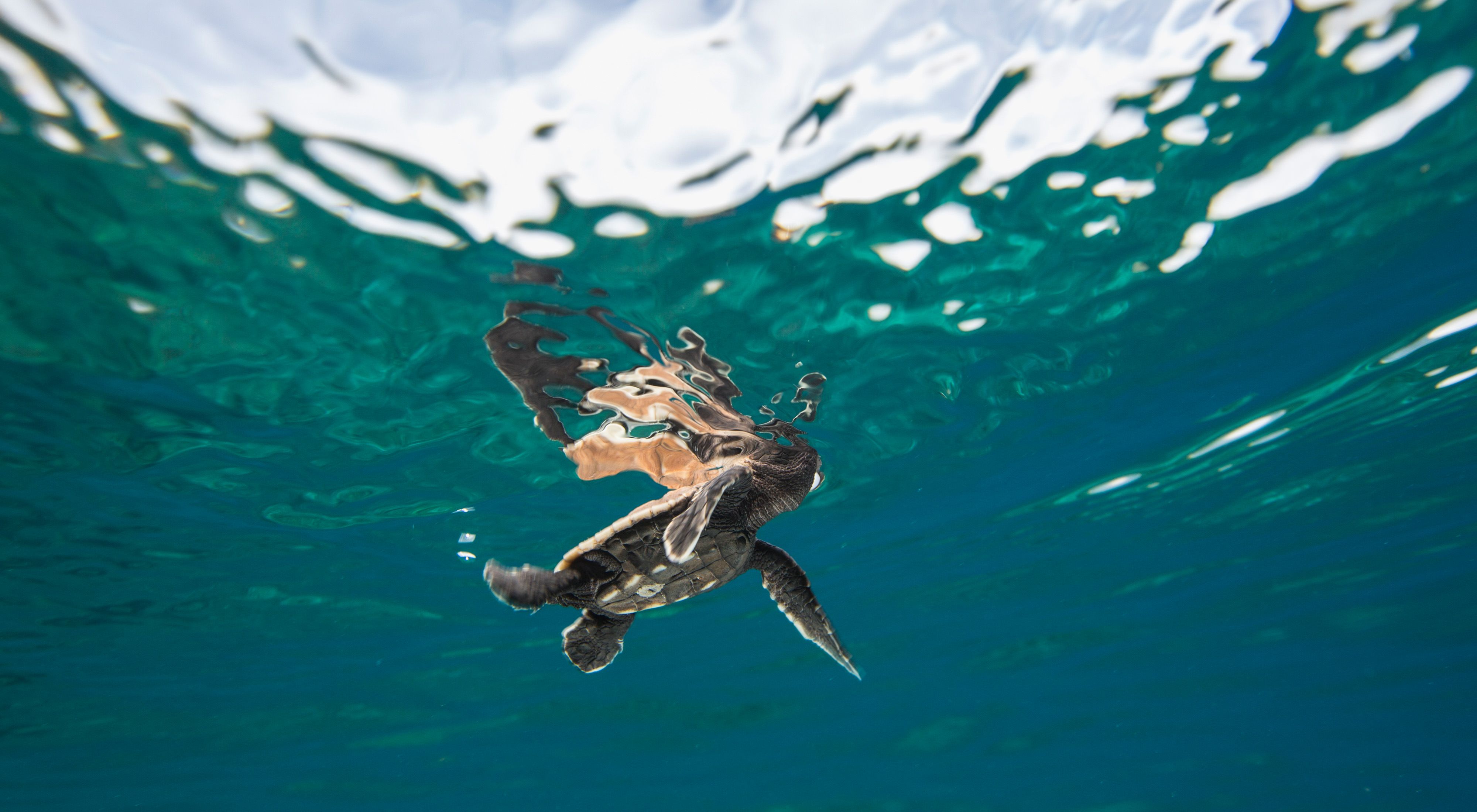Scientists and local communities are working together to protect endangered sea turtles and their nesting grounds in the Western Pacific Ocean.
The mystery of sea turtle migration
Hawksbill turtles and leatherbacks swim across thousands of miles of ocean during their lifetimes. But little is known about where they go, complicating efforts to save them. The Nature Conservancy (TNC) and local communities in the Solomon Islands are working to discover the secrets to their migration—and saving them from extinction.
It’s not easy to be a sea turtle.
The ancient hawksbill has long been targeted by poachers for their amber-hued, intricate shell, coveted for luxury items from sunglasses to cigarette boxes. To make matters worse, sea turtles are often hooked by fishing boats and entangled in nets. Frequently they eat and suffocate on plastic floating throughout the ocean.
Turtle Tales: A Conversation with TNC Scientists
Moderated by The Nature Conservancy Director of Gender & Equity in Asia Pacific, Robyn James, Melanesia Program Director Rick Hamilton and Conservation Officer Madlyn Ero share stories from the field on how we’re creating a brighter future for sea turtles in this webinar.
It’s not hard to understand why the hawksbill turtle is classified by the International Union for Conservation of Nature (IUCN) as Critically Endangered: If we don’t understand their migration, we can’t save them from extinction.
Beginning at peak nesting season in 2016, TNC worked with local communities to launch a unique program in the remote Arnavon Islands of the Western Pacific Ocean to track hawksbill migration patterns so that we can better protect the habitat where they nest, migrate, and feed. To do so, we’re using satellite tags on a small group of turtles to uncover the mystery of their travels.
Through this research, TNC found that most nesting turtles spend their entire nesting season within the Arnavons' protected boundaries, and the majority of these turtles return to the Great Barrier Reef to forage in highly protected waters, moving from one sanctuary to another. This highlights the need for an interconnected approach to establishing marine sanctuaries, which can also help to conserve shared resources.
This remarkable initiative to save nesting hawksbill turtles is a window into the future of conservation—one that combines community involvement and pride for local lands, waters and wildlife with broader conservation goals, scientific research and emerging technologies.

Help us continue this important work
Together, we can work to save hawksbills and leatherbacks from extinction.
Support Sea TurtlesIn addition, scientists estimate that there are only about 1,400 breeding adults of the Western Pacific subpopulation of leatherback turtles. Working with the local communities, we are also collecting data on nesting females to better understand their behaviors and numbers.
Together, we can secure a brighter future for the remarkable sea turtle.

Content
Solomon Islands' first female rangers help save leatherback turtles
Solomon Islands' first female rangers help save leatherback turtles

Partnerships
Communities Supporting Sea Turtles
Local communities in the Arnavon Islands are the hawksbill’s biggest champions.
